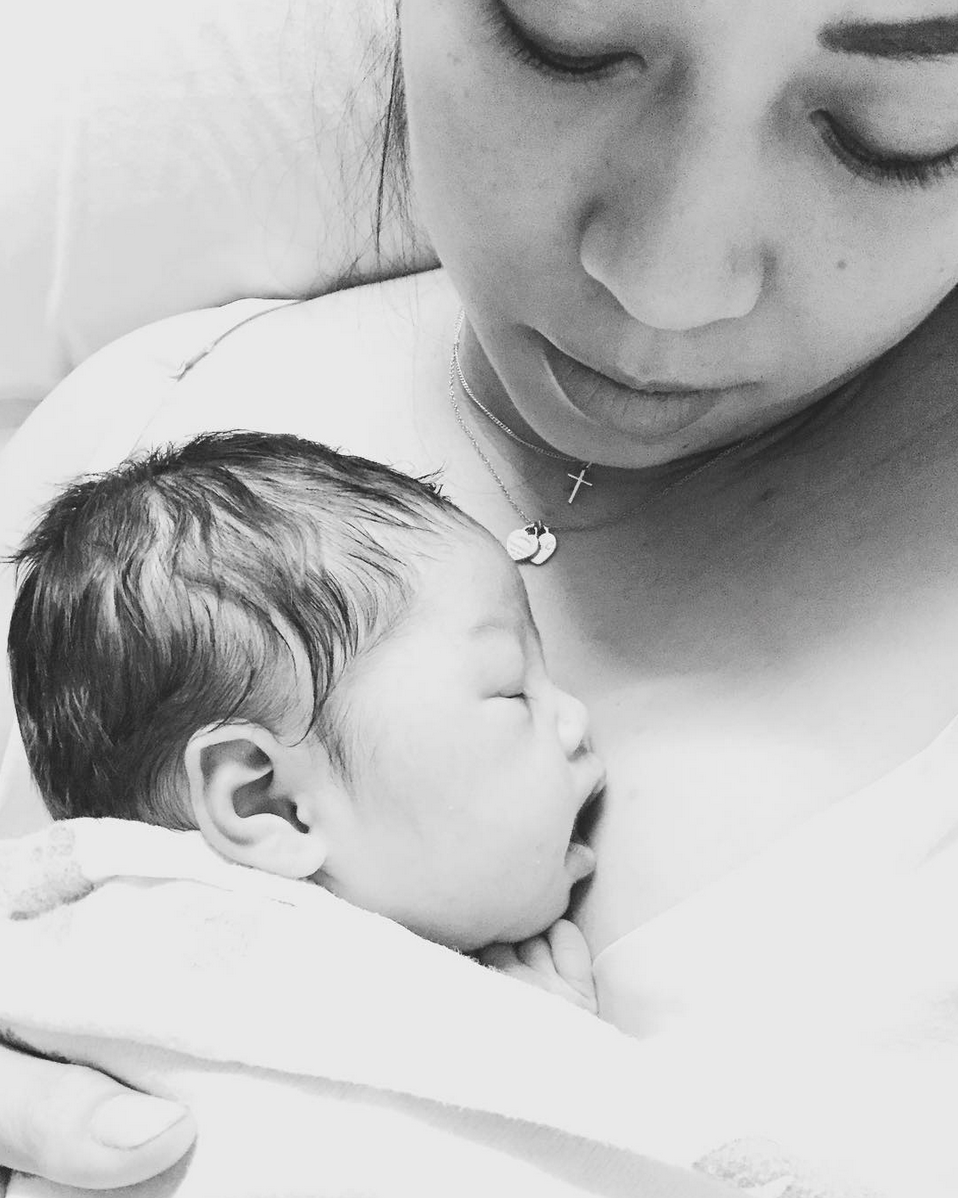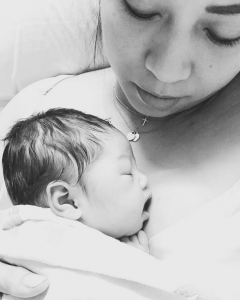

Once she’s born, your baby first learns about scent, touch, sight, hearing, taste and trust —along with many other things—from being right there against you. She came from you. And now that she’s here, skin to skin, also known as Kangaroo Care, is a way to maintain that unique closeness you and baby shared when she was in your womb.
When naked baby is put right onto mum’s bare chest, skin to skin, she is usually happier. Remember in the womb, your baby didn’t have to regulate her temperature. So right there next to you helps her stay nice and cozy.
In my experience, babies who are allowed more time skin to skin have better weight gain than those who are not. They literally have access to mum’s breast milk whenever they want it. They also don’t have to use their calories to regulate their own temperatures — they use their energy to grow. This means a happier infant with a stable heart and breathing rate.
When a mother practices skin to skin, her own stress levels are reduced, which can significantly combat post-partum depression. Regularly practicing the closeness only helps you bond with your child, as well as can help you speed up your own labour recovery. With regulated hormones, your levels of maternal oxytocin will increase and that is very good news for your milk supply.
The interest in skin-to-skin contact can be traced back to the late 1970s when doctors in Bogatá, Columbia ran out of incubators to keep the hospital newborns warm so instead they put the tiny babies right on bare chests to keep them warm. The babies thrived and people began to take notice.
Here are few tips I like to suggest to promote skin-to-skin for new mothers:
plan on skin to skin in the hospital.
If everything is safe and the baby is okay, have it in your birth plan for the doctors to put the baby skin to skin. A newborn held skin to skin immediately after birth is much more likely to breastfeed within the first hour than a swaddled newborn.
create a private sanctuary.
When you’re in the hospital room, you can pull the curtains around your bed to get some privacy. I suggest to bring your own cozy blanket, nursing pillow, or robe from home to help cover you up and wrap around you and your newborn.
keep bare contact going at home!
When you get home, spend as much time as possible skin to skin. In bed, it’s nice to recline on a pillow with baby on your chest. Bathing with baby on your skin is also replenishing and may help with latching with breastfeeding.
carriers help!
Try a wrap baby carrier, such as the Ergobaby Adapt baby carrier to hold your diaper-only baby against your bare chest, then put a button-front shirt over both of you.
Skin-to-skin time with your partner is also very valuable. Skin to skin time helps partners to feel empowered. Partners are able to read hunger cues, calm baby, and reduce stress. Time with partners allow mums a chance to get some sleep.
Remember, placing baby skin to skin gives her unlimited access to the breast and encourages breastfeeding. It can help to solve breastfeeding problems, prevent hypoglycemia and other newborn challenges, reduce pain, stabilize premature infants and encourage your baby’s brain development.



